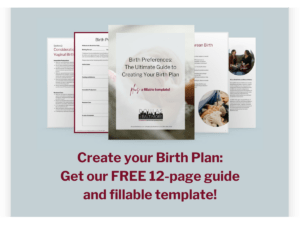As a society we are obsessed with infants’ sleep. The first questions people ask after you welcome a little one into your home are often focused on sleep.
“So how is the baby sleeping?”
“Are you getting any sleep?”
And my personal favorite, “Are they sleeping through the night?”
It’s almost as though how well (or not) an infant sleeps is the gauge to measure the caliber or quality of the baby.
“She’s giving us 5 hour spans of sleep. She’s such a good baby.”
While your friends, family, colleagues and oftentimes perfect strangers, are all well-meaning, it can be difficult to filter through the opinions, misconceptions, and outdated information. As childbirth & parenting educators, postpartum doulas, and Newborn Care Specialists, we always strive to stay on top of the most up to date and relevant information pertaining to newborn sleep safety, developmentally appropriate sleep habits, and the latest sleep related gear and gadgets.
A quick walk down the infant gadgets aisle at Target may also lead you to believe that it costs hundreds of dollars to get a baby to sleep- 400 variations of swaddles, white noise machines, cribs, bassinets, dozens of types of crib/bassinet mattresses, projection machines, motion sensing video monitors, respiration and heart rate sensors, and intuitive bassinets.
The American Academy of Pediatrics (AAP) released an updated version of their safe sleep guidelines earlier this summer. This information can be helpful to pass along to anyone who may play a part in your baby’s care. Much of this bulletin is clarification or reiteration of previously released information along with some updated recommendations. Here’s our recap.
1. The ABC’s of safe sleep: Alone, on their Back, in a Crib (or bassinet).
Babies should always sleep in their own dedicated sleep space (a crib or bassinet specifically), not bedsharing with any other family members (no shared couch or chair sleeping either). This applies to multiples sharing a sleep surface as well. Placing a baby to sleep on their back can help to maintain baby’s airway. Notice how your little one tends to turn their head to the side frequently – this is to ensure they can breathe properly, as dipping their chin to chest can close off their airway.
The Consumer Product Safety Commission (CPSC) is responsible for testing and monitoring of infant sleep related products like cribs, bassinets, play yards and bedside sleepers. The CPSC also maintains an extensive recall listing, so you can check their website to ensure the baby gear you are using, particularly if it has been handed down to you by friends or family, is safe for your baby.
2. Avoid routine sleep on less safe surfaces.
Car seats, swings, loungers, etc are not recommended for routine sleep, and should never be utilized for unsupervised sleep. One of the guidelines that we teach is that if your baby gadget has straps, USE them EVERY time. These straps help to hold baby’s bottom in the appropriate seating position so they don’t scoot and compromise their airway.
Another consideration is whether baby will be able to sufficiently turn their head to the side; swings, bouncer seats and pillow like devices like the Doc-a-tot or Boppy lounger can restrict head movement causing baby to rebreathe or inhibit the dissipation of CO2. If you are not able to keep an eye on your sleeping baby, it’s always best to move them to a safe sleep surface.
3. Sleep related items to use (and some to avoid).
Pacifier usage reduces the risk of SIDS. Swaddles should be used if desired, but only until your baby shows signs of rolling. Once your baby is rolling, opt for a wearable blanket like this one. Do not use loose blankets until your baby is well over 12 months of age.
One of the most recent recommendations is to avoid the use of weighted swaddles (like the Nested Bean) or additional weighted objects (rice sock, etc). When studied, these products show they may pose a risk to baby by lowering their breathing rates.
Also updated in 2022 recommendations is that for healthy, full-term babies, at-home cardiorespiratory monitors (like the Owlet, Snuza, Nanit Complete, etc) are not recommended. These products may actually increase new parents’ anxiety levels by alarming unnecessarily and creating a false sense of security. If you feel your baby needs monitoring, talk with your doctor.
Findng yourself needing some guidance? Join us for our Baby 101: The 4th Trimester workshop. For extra hands, plan for in-home postpartum support or overnight newborn care. Safe and developmentally appropriate newborn sleep is a topic we always prioritize.






